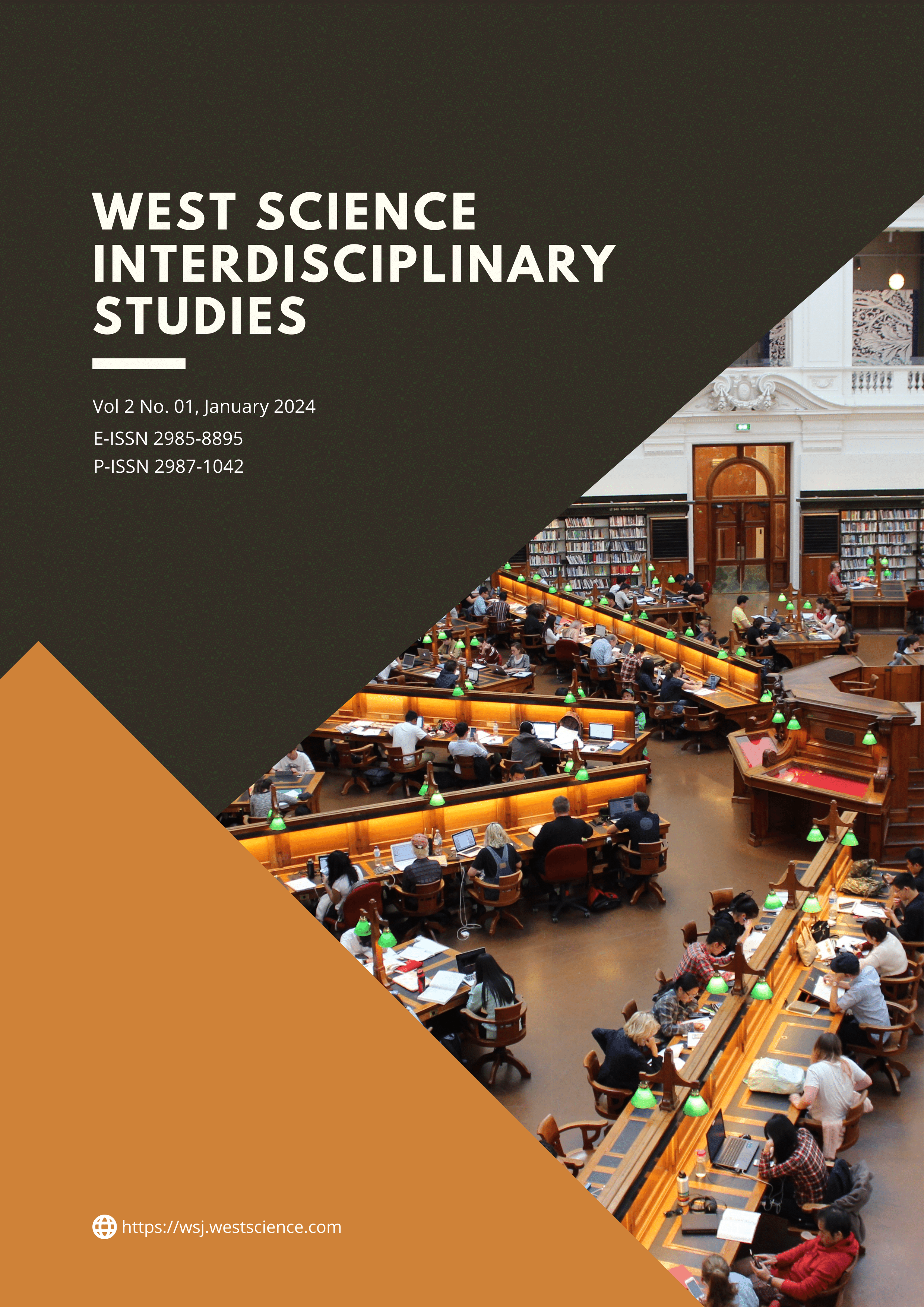Bibliometric Analysis of Artificial Intelligence
DOI:
https://doi.org/10.58812/wsis.v2i01.563Keywords:
Bibliometric, Artificial Intelligence, VosviewerAbstract
Artificial Intelligence Bibliometric Analysis (AI) is a study involving quantitative measurement and evaluation of scientific literature on artificial intelligence. Relevant keywords in this analysis include "artificial intelligence", "machine teaching", "deep training", and "This method allows researchers to identify major developments and focus in artificial intelligence research, provide insight into the authors' contributions, and understand the direction of this science. Artificial intelligence is a branch of computer science that focuses on developing computing systems that can perform tasks that normally require human intelligence. Using algorithms and mathematical models, AI can process data quickly, identify patterns, and make intelligent decisions.AI development has created applications that have changed the way we work, learn, and interact. From efficient automation systems to virtual assistants that understand and respond to human conversations, AI has made significant contributions to improving productivity and quality of life. We use VOSviewer software to classify the material after reviewing the database.
References
S. Sunarti, F. Fadzlul Rahman, M. Naufal, M. Risky, K. Febriyanto, and R. Masnina, “Artificial intelligence in healthcare: opportunities and risk for future,” Gac Sanit, vol. 35, pp. S67–S70, Jan. 2021, doi: 10.1016/j.gaceta.2020.12.019.
C. Guan, J. Mou, and Z. Jiang, “Artificial intelligence innovation in education: A twenty-year data-driven historical analysis,” International Journal of Innovation Studies, vol. 4, no. 4, pp. 134–147, Dec. 2020, doi: 10.1016/j.ijis.2020.09.001.
J. Monteiro and J. Barata, “Artificial intelligence in extended agri-food supply chain: A short review based on bibliometric analysis,” in Procedia Computer Science, Elsevier B.V., 2021, pp. 3020–3029. doi: 10.1016/j.procs.2021.09.074.
A. M. Votto, R. Valecha, P. Najafirad, and H. R. Rao, “Artificial Intelligence in Tactical Human Resource Management: A Systematic Literature Review,” International Journal of Information Management Data Insights, vol. 1, no. 2, Nov. 2021, doi: 10.1016/j.jjimei.2021.100047.
S. Verma, R. Sharma, S. Deb, and D. Maitra, “Artificial intelligence in marketing: Systematic review and future research direction,” International Journal of Information Management Data Insights, vol. 1, no. 1, Apr. 2021, doi: 10.1016/j.jjimei.2020.100002.
M. Pournader, H. Ghaderi, A. Hassanzadegan, and B. Fahimnia, “Artificial intelligence applications in supply chain management,” International Journal of Production Economics, vol. 241. Elsevier B.V., Nov. 01, 2021. doi: 10.1016/j.ijpe.2021.108250.
J. K. Tamala, E. I. Maramag, K. A. Simeon, and J. J. Ignacio, “A bibliometric analysis of sustainable oil and gas production research using VOSviewer,” Clean Eng Technol, vol. 7, Apr. 2022, doi: 10.1016/j.clet.2022.100437.
M. M. Mariani, I. Machado, V. Magrelli, and Y. K. Dwivedi, “Artificial intelligence in innovation research: A systematic review, conceptual framework, and future research directions,” Technovation, vol. 122, Apr. 2023, doi: 10.1016/j.technovation.2022.102623.
A. Darko, A. P. C. Chan, M. A. Adabre, D. J. Edwards, M. R. Hosseini, and E. E. Ameyaw, “Artificial intelligence in the AEC industry: Scientometric analysis and visualization of research activities,” Automation in Construction, vol. 112. Elsevier B.V., Apr. 01, 2020. doi: 10.1016/j.autcon.2020.103081.
S. Kumar, W. M. Lim, U. Sivarajah, and J. Kaur, “Artificial Intelligence and Blockchain Integration in Business: Trends from a Bibliometric-Content Analysis,” Information Systems Frontiers, vol. 25, no. 2, pp. 871–896, Apr. 2023, doi: 10.1007/s10796-022-10279-0.
A. Di Vaio, R. Palladino, R. Hassan, and O. Escobar, “Artificial intelligence and business models in the sustainable development goals perspective: A systematic literature review,” J Bus Res, vol. 121, pp. 283–314, Dec. 2020, doi: 10.1016/j.jbusres.2020.08.019.
M. Mustak, J. Salminen, L. Plé, and J. Wirtz, “Artificial intelligence in marketing: Topic modeling, scientometric analysis, and research agenda,” J Bus Res, vol. 124, pp. 389–404, Jan. 2021, doi: 10.1016/j.jbusres.2020.10.044.
J. W. Goodell, S. Kumar, W. M. Lim, and D. Pattnaik, “Artificial intelligence and machine learning in finance: Identifying foundations, themes, and research clusters from bibliometric analysis,” Journal of Behavioral and Experimental Finance, vol. 32. Elsevier B.V., Dec. 01, 2021. doi: 10.1016/j.jbef.2021.100577.
Downloads
Published
How to Cite
Issue
Section
License
Copyright (c) 2024 Rohimatun Nur’aeni, Rendy Zalsahra

This work is licensed under a Creative Commons Attribution-ShareAlike 4.0 International License.





















 Instagram
Instagram 